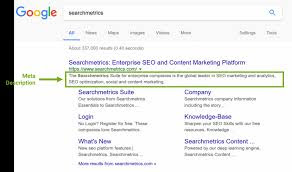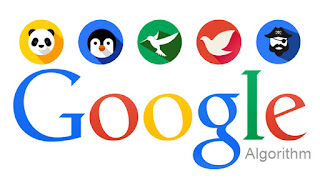What Is On-Page Optimization In SEO
On-page optimization or on site SEO refers to the practice of optimizing web pages to improve a website’s search engine rankings and earn organic traffic. The modification of content, text, headlines, HTML tags, and images were improves during on-page optimization.
ELEMENTS OF ON-PAGE OPTIMIZATION
Adopting this development is important, and we can do it by ensuring that your website and its content. Snippet has a major role in developing a good qualified website. The snippet is a single search result in a set of search results and generally consists of a title, a URL and a description of the page. A snippet contains title of the web page and meta-descriptions.
HEAD-SECTION
In
head sections titles are very important area for SEO optimization. It will help
web crawlers to identify the URL and a brief content of your website. Including
focusing keywords in your heading will be more effective. Giving a meaningful
title tag can also increase your CTR-, which means click through rate. The
number of impressions; when the keyword indexed in search results gets
impression in Google. Google converts these impressions into ‘clicks’ and its
percentage rate, it is known as click through rate (CTR). Title must be
attractive, unique and impressive to increase the probability of clicks. There
some factors that can be negatively affect the SEO results.
A title tag does
not contain any grammatical errors or spelling mistakes. The maximum character
which can enter in the title tag is 55-65 with a pixel width of 512. If the
title is longer than any of this can be affect our webpage. Also using fully
uppercase letters or small letters does not allowed, it can reduce the CTR.
META DESCRIPTION:
Meta
description is equally important as head section in SEO optimization. Meta
description or Meta tags that provide a description of what the page is about,
are often displayed under the title. Meta tags should be attractive, relevant,
and impressive. The capacity characters of meta description are 155-160 for a
normal page and for blogs or article it is 155 with 1024 pixel width. If the
meta-tag exceeds it will appear as ’….’ after the exceeding lines. Google will
always provide relevant contents from your web page if the given meta-tag is
irrelevant, otherwise it contains grammatical errors or does not have a
meta-tag. In such situations Google also show HTML code as meta-description.
Eg: <meta
name= “description” content=”SEO is defined as….”>
BODY PORTION:
On
a web page the more visible page or portion is H1 tag. A page contains only one
meta-tag if it is more than 1 it will be very confusing for Google bots to get
identify. The next is H2 tag, are subheading which can be 2 or more. Here the
content and H2 title should be matching. In old school SEO there is belief that
giving boldness to the keywords and providing grey color will be more effective
way to get ranked. But inducing this method can help the customer to easily
read and realize what the content is about. During SEO optimization we also
consider the customer’s easiness to read, not only looking the web crawlers.





Comments
Post a Comment